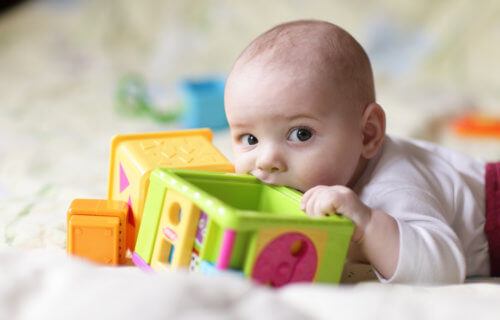TRONDHEIM, Norway — Microplastics have been found crossing the placenta into unborn babies, a shocking study reveals.
Scientists warn it is impossible to stop children from ingesting the tiny plastic particles as well as even smaller nanoplastics, which can be found almost everywhere. Researchers with the Norwegian University of Science and Technology also found microplastics in newborn children.
Little ones can ingest microplastics from baby bottles, toys, textiles, and food packaging. It also may be in formula milk and even breast milk, although scientists are still working to find concrete evidence of this.
When microplastics end up in household dust, children can ingest them by playing and crawling on the floor. Microplastics contain other harmful chemicals as well as plastic, such as phthalates and metals added for color, stabilization, or as a biocide. When microplastics end up outdoors, for example as particles from car tires, this plastic core is often coated with air pollution and car exhaust.
‘No one knows exactly how much microplastic a child ingests’
Regulations for plastic in various goods, such as toys and baby bottles, and for the handling of plastic waste vary across the globe. This means children are exposed to very different amounts of plastic depending on where they live. People living in poverty have much greater exposure to air pollution, which includes microplastics.
“It’s quite possible that children are more exposed to microplastics than adults, similar to children’s greater exposure to many other environmental toxic chemicals,” says Kam Sripada from NTNU in a university release.
“No one knows exactly how much microplastic a child ingests. But several studies now suggest that today’s children absorb microplastics in their bodies as early as at fetal age. This is concerning,” Sripada continues. “Children do not have a fully developed immune system and are in a very important phase of their brain development. This makes them particularly vulnerable.”
“Nano- and microplastics are so miniscule that they can travel deep into the lungs and can also cross into the placenta. At the same time, they transport dangerous chemicals with them on their journey. That’s why we believe that nano- and microplastics can be a health risk for children.”
Parents can reduce the amount of plastic their children are exposed to by making sure their food is wrapped in as little plastic as possible, cleaning the house, choosing hygiene products with less plastic, and choosing building materials that don’t contain PVC or other plastics when making home renovations.
Who’s responsible for plastic pollution?
For the study, the team looked at 37 articles about microplastics and nanoplastics in connection with pregnancy and childhood. They say there is not enough existing research about children’s exposure to the nasty plastics at school, in neonatal wards, and through breast milk, breast milk substitutes, and other baby care products.
Almost no studies have tried to work out how much plastic children ingest, according to the NTNU researchers. This lack of existing studies can partly be explained by limitations in existing technology for researching very small particles.
We do know that when we are in our mother’s womb and throughout our childhood we are especially exposed to environmental toxic chemicals, nanoplastics, and microplastics. The team says more research is necessary which focuses on pregnant women’s level of exposure to various plastic substances, and how plastic can be transferred to the fetus. They also say it is not just individuals who need to act if children are to be exposed to fewer microplastics.
“The authorities and industry bear the responsibility. We strongly encourage them to uphold the precautionary principle,” Sripada adds.
The study notes that both federal and local authorities can help to ensure that the use of plastics in society is kept at a low level. The team recommends that industries which manufacture various plastic products aimed at children and women be more prudent and ensure that their products don’t suffer from plastic leaching.
The findings are published in the journal Environmental Health Perspectives.
South West News Service writer Gwyn Wright contributed to this report.

